In India, no one ever calls ahead before dropping in a for a visit. Maybe you are sitting at home one fine evening, reading a fabulous book and have just come to the clincher. Or maybe watching a suspense thriller where the culprit is about to be caught. Right at that crucial moment, the doorbell chimes.
If you are like my dad, you will grit your teeth, mutter something unintelligent under your breath and open the door. If you are anything like my Mom, you will wear the biggest smile on the planet, and fly to the door to open it. And find your previous neighbor from ten years ago standing outside, visiting with his entire brood of 4 kids, Mrs previous neighbor, and maybe even his little dog Tuffy.
So what do you do? You exclaim, “Aayiye Aaiyye! Andar aaiye!’ After exchanging pleasantries and pretending you are at this point thrilled to see the unannounced guests, you utter the magical words – Chai lenge?’
Translated, you invite them in with enthusiasm (Come in! come in!) and then ask, ‘Will you have tea?’
The ‘chai’ is often served with another rescue item – biscuits, a must in every Indian cabinet. Sitting pretty in dainty china cups placed carefully on a tray, this beautiful brown beverage has rescued many an unprepared host and has taken such ‘hostage’ situations to a new level of hospitality savvies.
The word garam, by the way, means ‘hot’. ‘Garam Chai’ is ‘hot tea’.
If you thought that’s where the chai saga stops, well, let me tell you it hasn’t even begun. Every evening, after coming back from office, Mr GG demands tea. He gets it. Half an hour later, he requests it again. More often than not, he gets it. An hour later, he cajoles me into making it. Eventually he gets it, along with a stinky eye.
Chai ( rhymes with buy) is possibly the most used food term in India. It has many different variations – cha, chai, masala chai, nimbu chai – generally a slight deviation of the main word – cha. Originally from China, Cha traveled to Persia, and then came to India through the Silk Route and made this warm, diverse and beautiful country its permanent home. Extensively grown in the North Eastern State of Assam, chai has become synonymous with ‘spiced tea’ in the west.
My Nana (my maternal grandpa) lived in Assam. He was a doctor by profession, and a tea lover in person. He served as a Doctor in Indian Railways, and was once posted in Assam. He fell in love with the place, quit his job, and started his practice, eventually building up a substantial pharmaceutical business. His house was bordered with miles and miles of tea estates. As a kid, I remember visiting the beautiful tea gardens, punctuated by tea garden workers carrying gunny sacks on their backs. I remember running in and around the grooved tea bushes, playing hide and seek, picking green tea leaves, and sometimes treated to warm fuzzy smiles of the tea estate workers, and at others, being chased away.
My Nani (grandmother) would make gallons and gallons of tea throughout the entire day, with maids serving one glass after the other to the 15-20 odd members who were present in that house at any given time of the day.
Printable recipe below
This serves 4 teacups (4 sippers / 3 gusty drinkers / 1 tea addict)
- 3 cups water
- 1 cup milk
- 3 tsp Tea Leaves
- Sugar to taste
- If adding spices:
- 1 cardamom mashed
- 1" ginger mashed
- Bring the water to boil
- Add tea
- Lower the heat and let it simmer for 30 seconds
- Add milk.
- Add cardamom and ginger.
- Swirl the kettle so that it gets mixed in well.
- Bring it to boil again, and switch off the heat.
- Cover with a tight lid and let it sit for 2 minutes. Make sure the steam does not escape.
- Strain and pour in a teapot.
- Pour in individual cups, spoon in sugar as desired and serve hot.



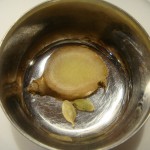
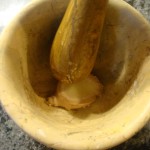
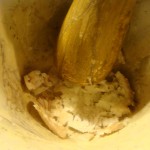
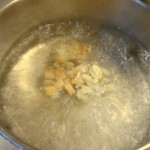
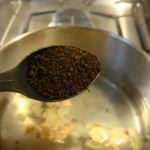

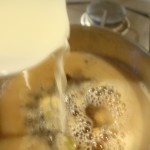
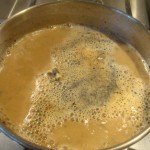
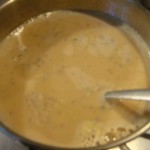

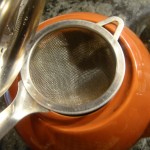
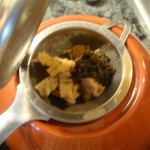
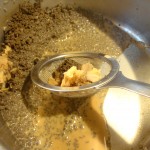

20 comments for “Garam Chai! – The Quintessential Indian Tea”